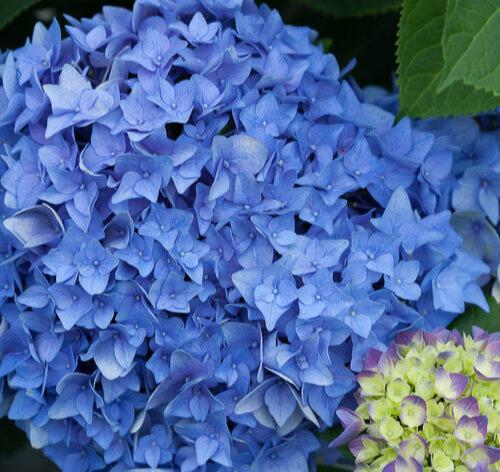Pause before you prune your hydrangeas.
Our best advice is to let your hydrangeas be unless their size is a problem. Only the native hydrangeas benefit from a prune in early spring to help develop sturdier stems for their large flowers. If you grow hydrangeas for their flowers, as most of us do, it is critical to know what type you have before pruning. Many gardeners prune their hydrangeas in the spring eliminating their early summer blooms and then wonder why their plant does not bloom. A late hard frost can also damage buds is less common.
Here is a guide for pruning the most popular types.
- The smooth hydrangea (Hydrangea arborescens) our lovely native, flowers on new wood and may be pruned down to 1 foot in early March. Pruning this variety can improve the shape and vigor of the plant as well as encourage larger blossoms.
- The bigleaf hydrangea (Hydrangea macrophylla) our old-fashioned favorite, flowers on old wood and can be pruned if necessary to control the size. Prune this shrub just after the flowers fade and never in spring! Gardeners should not wait too late into fall before pruning because late-season pruning can stimulate tender new growth that might be killed during winter.
- The panicle hydrangea (Hydrangea paniculata) and its cultivars also flower on new wood but don't require the drastic pruning of the smooth hydrangea. Panicle varieties look best if one-third of the old growth is pruned back in late winter. If unpruned, may be too large for your landscape.
- The oakleaf hydrangea (Hydrangea quercifolia) flowers on old wood also but is often left unpruned since its spreading habit is quite attractive. The huge, 12-inch flowers are quite ornamental and will lend a late-season interest to the autumn garden.
- If you do not know the type of hydrangea you have in your garden, we should have a record of it associated with your name. Just call and ask!
